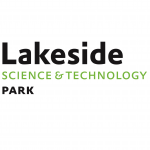ALPHAS: Adaptive Bitrate Ladder Optimization for Multi-Live Video Streaming
IEEE International Conference on Computer Communications
IEEE INFOCOM 2025
19–22 May 2025 // London, United Kingdom
[PDF]
Farzad Tashtarian (Alpen-Adria Universität Klagenfurt, Austria); Mahdi Dolati (Sharif University of Technology, Iran); Daniele Lorenzi (University of Klagenfurt, Austria); Mojtaba Mozhganfar (University of Tehran, Iran); Sergey Gorinsky (IMDEA Networks Institute, Spain); Ahmad Khonsari (University of Tehran, Iran); Christian Timmerer (Alpen-Adria-Universität Klagenfurt & Bitmovin, Austria); Hermann Hellwagner (Klagenfurt University, Austria)
Abstract: Live streaming routinely relies on the Hypertext Transfer Protocol (HTTP) and content delivery networks (CDNs) to scalably disseminate videos to diverse clients. A bitrate ladder refers to a list of bitrate-resolution pairs, or representations, used for encoding a video. A promising trend in HTTP-based video streaming is to adapt not only the client’s representation choice but also the bitrate ladder during the streaming session. This paper examines the problem of multi-live streaming, where an encoding service performs coordinated CDN-aware bitrate ladder adaptation for multiple live streams delivered to heterogeneous clients in different zones via CDN edge servers. We design ALPHAS, a practical and scalable system for multi-live streaming that accounts for CDNs’ bandwidth constraints and encoder’s computational capabilities and also supports stream prioritization. ALPHAS, aware of both video content and streaming context, seamlessly integrates with the end-to-end streaming pipeline and operates in real time transparently to clients and encoding algorithms. We develop a cloud-based ALPHAS implementation and evaluate it through extensive real-world and trace-driven experiments against four prominent baselines that encode each stream independently. The evaluation shows that ALPHAS outperforms the baselines, improving quality of experience, end-to-end latency, and per-stream processing by up to 23%, 21%, and 49%, respectively.














